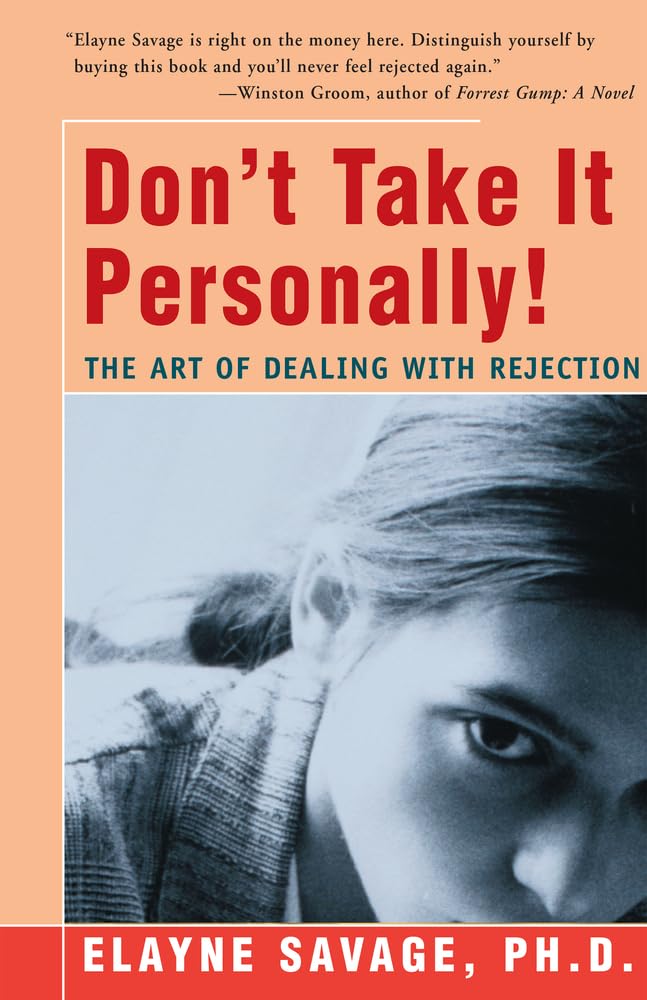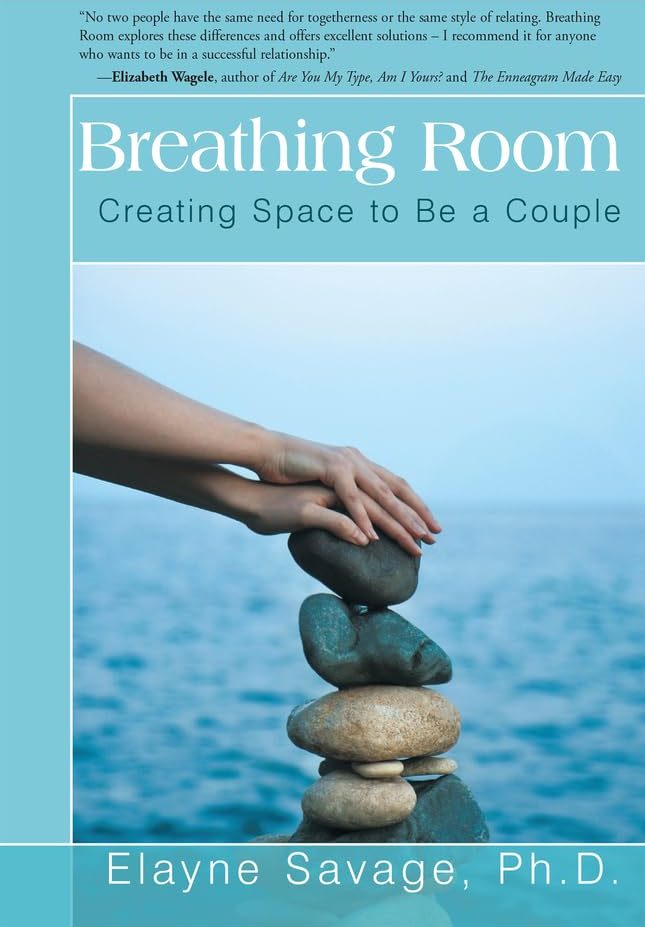By Elayne Savage, PhD
 ©lolloj – Can Stock Photo Inc.
©lolloj – Can Stock Photo Inc.
Do you find yourself guessing what someone might be meaning by their words or actions . . . or inactions? Do you sometimes assume they are really thinking something critical or invalidating or judgmental? And then do dwell for hours on your assumption, trying to decipher the ‘real meaning?’
Lately I’ve been hearing lots of stories from clients about serious misunderstandings in their personal or workplace communications. They find themselves trying to guess what someone means when words or behaviors are unclear and confusing. Many aren’t sure how to respectfully check something out, so they don't try. Then they contact me for help in skills for clarifying communication.
Over the last 20 years I’ve been terming this guesswork 'filling-in-the-blanks' and I’ve watched hundreds of faces light up in recognition. Yes, lots of us assume meaning. Yes, we belatedly realize we're often mistaken in our assumptions and it can seriously muck up our relationships.
Clients report how they misread the intent, take something personally, over-react and complicate the relationship. And it happens in every kind of relationship: with partners and family and friends and in the workplace.
When I ask couples or consulting clients on my intake form about “Why did you come into counseling now,” it’s no surprise that the most frequent answer is “communication problems.” And with further exploration it turns out there are way too many assumptions made. Way too much 'Filling in the blanks!'
The Prism Of Our Misconceptions
We tend to see things through the prism of our misconceptions. Our interpretations pass through a filter containing our private storehouse of experiences accumulated since childhood. These early traumatic experiences color our beliefs about our world, the safety
of our world and the people in it.
When these experiences are positive we learn to trust intentions of others. If they happen
to be hurtful, rejecting experiences, however, we learn to be wary, protecting ourselves from further hurt.
If a painful experience gets triggered, we might find ourselves in the middle of a Fight, Flight or Freeze response.
From my 9/30/14 blog post:
“Each new fear-inducing traumatic situation can bring on a kind of PTSD – the spurts of stress hormones adrenaline and cortisol that are activated by the amygdala and repeatedly result in fight, flight or freeze reactions during a new experience . . . and these often repeat over the course of our lives . . . . the human brain has a special file to store memories that are linked to strong emotions . . . . When certain powerful memories are triggered by a specific cue there may be an emotional or body reaction. Often we don’t realize what prompts us to get so upset and it turns out it is some kind of stored memory,”
(More on Fight, Flight or Freeze Responses)
‘Filling in the Blanks’ Is a Setup for Feeling Rejected
Here's a story I often hear from therapy and consultation clients. It has many variations but basically goes like this:
You are walking down the hall or into a conference room. You pass a senior management colleague and you say a big ’hello.” Nothing. No response.
What do you tell yourself? Do you find yourself going through your emotional checklist?
– “Do they not like me?”
– “Did I do a bad job on that last report?”
– “Oh no, I’m going to be fired.”
Fired! How quickly your mind goes there. Fascinating isn't it — how quickly we 'fill-in-the-blanks' with self-doubt and self-blame and self-rejection when we don't know the real explanation. And to make matters worse, we tend to ruminate on these possible misconceptions. Maybe for days!
©Bialasiewicz – Can Stock Photo Inc.
Wouldn’t it be great to find a way to stop this run-away rejection train? Can you validate your feelings that yes, you are hurt by the seeming ‘diss.’’ Then can you take a moment to ask yourself if maybe there’s a chance you might have misread the situation?
Can you try to remind yourself there is a good chance he or she was so wrapped up in their own thoughts that they didn't notice you?
What would it take to decide to check it out and clarify the situation? After all, the most upsetting answer you could hear would most likely be no worse what you are already telling yourself.
OK so let’s talk about the dynamics and discomfort of the fast-moving rejection train; then let’s take a look at some options for getting back on track.
Feeling Like the Bull's Eye in a Target
Isn't it amazing . . .
– how easily we make the situation all about us (when it's often more about the other person.)
– how many times we take someone’s comment or action (or inaction!) as a personal affront.
At these times you may be finding yourself in the center of your universe. In that center position it’s easy to feel like the bull's-eye in a target -— expecting and waiting for the dart's sting.
© Can Stock Photo / firstp
When you’re feeling like a target, vulnerable and unprotected, it's easy to take things personally. And it takes a bit of work to visualize getting out of that center place, putting yourself in the other person’s shoes and trying to see things from their perspective.
The Dance Between Taking Things Personally and Rejection
Perceived rejection pops up in literally hundreds of forms, usually involving feeling ‘dissed’ in some way – from feeling disrespected, to feeling ignored or discounted or dismissed, to feeling judged or criticized or blamed and shamed, to feeling abandoned.
•Taking things personally involves feeling disrespected and rejected.
•Taking things personally involves feeling blamed or slighted or personally attacked.
•Taking things personally, involves getting feelings hurt by misinterpreting the meanings of others, seeing the actions of others as a personal affront, believing someone wants to hurt us.
•Taking things personally involves letting our emotions be controlled by what somebody says or does (or what they neglect to say or do.)
It’s easy to understand how experiencing this kind of hurt leads to efforts toward protecting ourselves from more hurt. Often the tendency is to pull back, even to the point of 'disappearing.' One woman describes how she "goes invisible, contracting into a pinpoint, withdrawing from everybody and everything.”
When you're feeling snubbed, ignored, hurt and rejected, how do you suppose you'll react the next time you see that person? Will you avoid their eyes? Will your hurt show on your face or in your body language? Might they interpret your reaction as judgment or disdain? Or will it look like 'attitude' to them?
Or to complicate matters even more, they may sense your withdrawal as a rejection of them.
Now it's the other person's turn to 'fill in the blanks.' They might try to figure out why you're acting the way you are. They might start thinking something like:
– "Did I just say or do something stupid?"
– "Maybe they don't want to be around me anymore."
– “Maybe I neglected to ask about something important.”
– “Why is s/he pushing me away?”
As a self-protection they might seem to be closed off and protected rather then open and available.
Then, ask yourself how might you react to how you perceive them?
Hopefully things you can talk out feelings before feelings get too hurt. As more time goes by, both participants might build protective walls around themselves, keeping the other out. Maybe each person feels confused and hurt. Can you see how negative reciprocity might begin to develop?
The longer the hurt feelings go on, the harder it is to get back on track. You don't know what to say or how to say it. So you don't say anything.
The relationship can become strained. You both might start feeling awkward and uncomfortable.
So you avoid contact with them. Or keep it to a minimum. Or can’t look them in the eyes when you do see them. Then they may start filling in the blanks and telling themselves you are ignoring them.
Feeling ignored feels like disrespect. Disrespect feels like a rejection and it’s hard not to take it personally.
Misunderstandings and hurt feelings can lead to bitterness and resentment, leaving no space left for connection.
Getting Off that Runaway-Rejection Train
The first step is to remind yourself there might be a misunderstanding about the meaning and intent of the other person, so ask yourself. “Could I be filling in the blanks?”
Next consider ways these confusing behaviors can get addressed, checked out and clarified. There’s so much at stake. What would it take to clear the air? What are your options here?
You can start by taking a deep breath and initiating a conversation about what you thought happened.
You can make an attempt to deal directly with the issue and the person. The idea of 'confronting' is surely scary for most of us. However, think of it as ‘confronting the situation’ which is not the same as confronting the person.’
For example, in our first story: can you take a deep breath, mention that you noticed they didn’t respond to your ‘hello’ and ask an open-ended question like “Is everything OK.”
In a situation that has become strained, you could consider identifying and addressing the awkwardness that has seemed to develop.
You might say something like: "I've noticed that it's been awkward between us lately. I wonder if it has felt the same for you? I value our relationship and would like for it to get back on track. Can we talk about how we can make this happen?" At least that's an entree back into a respectful relationship.
©iqoncept – Can Stock Photo Inc.
A Quick and Easy Tip for Checking Things Out
As you probably have guessed, I’ve jumped way to fast into assumptions and presumptions much of my life. Over the last few years I developed a basic 3-step model for checking things out so I’m not ‘filling in the blanks’ so often.
This model can be tailored to lots of situations:
✔1 – “This is what I heard you say ________________”
✔2 – “Is it what you said?”
✔3 – “Is it what you meant?“
In the case of feeling hurt by behavior rather then someone’s words:
✔1 – “This is what I noticed _____________.”
✔2 – “Is it what you think happened as well?’
✔3 – “Is it what you intended?”
This tip is an simple entree to creating essential conversations with someone you care about . . .
Do you, too, have stories and experiences with ’filling in the blanks’ to share?
Until next month . . .
Elayne
© Elayne Savage, PhD
Elayne Savage is the author of ground-breaking relationship books published in 9 languages.
Both books are now available on Kindle!
To order DON'T TAKE IT PERSONALLY! THE ART OF DEALING WITH REJECTION
To order BREATHING ROOM — CREATING SPACE TO BE A COUPLE
REPRINTING THESE BLOGS
You can use the articles in 'Tips from The Queen of Rejection'® as long as you include an attribution and, whenever possible, a live link to my website. I'd appreciate if you'd notify me where and when the material will appear.
The attribution should include this information: Elayne Savage, PhD is a communication coach, keynote speaker, and trainer, practicing psychotherapist and author of Don't Take It Personally! The Art of Dealing with Rejection and Breathing Room – Creating Space to Be a Couple.
To find out more about my speaking programs, coaching and consultation services visit: //www.QueenofRejection.com or call 510-540-6230 if you or your group can benefit.
Contacting Elayne
I welcome your feedback as well as suggestions for topics you'd like to see addressed in this e-letter.
Here's how you can reach me:
510-540-6230
www.QueenofRejection.com
For more communication and rejection tips, you can follow me:
Twitter@ElayneSavage
LinkedIn.com/in/elaynesavage
Facebook.com/elayne.savage


Leave a Reply